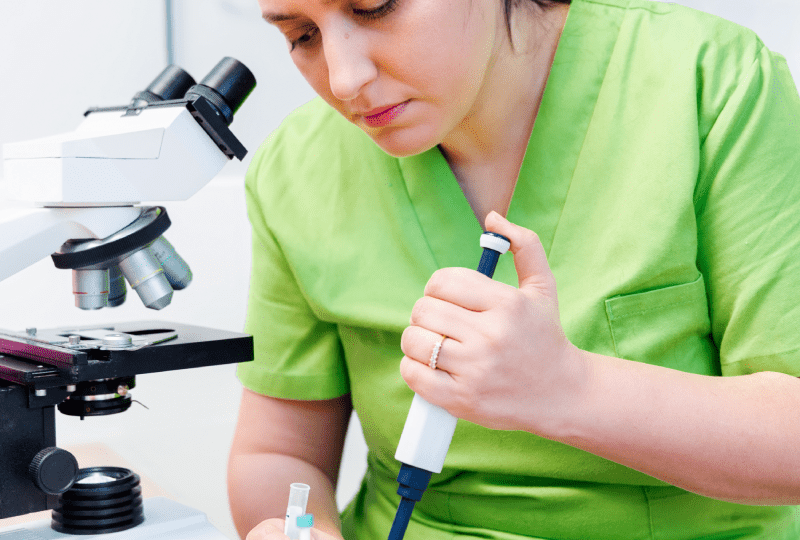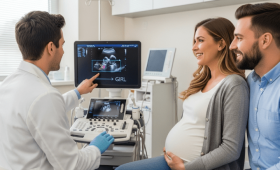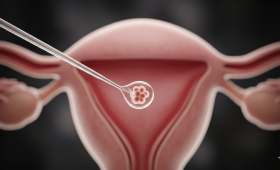What Is Gender Selection IVF Treatment?
Gender selection IVF treatment is the process of determining the desired sex of the embryo by genetically examining the embryos before they are transferred to the uterus, and transferring only that embryo. This method is essentially an application of the advanced laboratory technology called PGT (Preimplantation Genetic Test).
While PGT-A (aneuploidy screening) is performed, the embryo’s sex chromosomes are also examined, thus detecting whether the embryo is a girl or a boy with an accuracy of up to 99%. This procedure is generally requested for family balancing purposes in countries where there are no legal restrictions and incurs an additional fee to the cost of IVF treatment.
Which Countries Legally Permit Gender Selection?
The number of countries that legally permit gender selection, even for social reasons (family balancing), is limited. The most known and popular centers in this regard are generally located in countries such as Turkish Republic of Northern Cyprus (TRNC), certain US states, and Mexico. These countries offer gender determination services using the PGT method to international patients within ethical and legal frameworks. It is vitally important for couples to thoroughly research the current legal regulations and ethical rules of the country they plan to visit before starting treatment, in order to avoid any legal issues during the process.
Is Gender Selection Legal In Turkey?
According to the laws of the Republic of Turkey, gender selection for social reasons (family balancing) is strictly prohibited within the scope of IVF treatment. The regulations of the Turkish Ministry of Health allow the PGT procedure to be applied only when medical necessity is involved (risk of carrying a gender-linked genetic disease). This situation requires couples considering treatment in Turkey to turn to overseas options with more flexible legal regulations if gender selection is their primary goal.
In Which Cases Can Gender Selection Be Done Medically?
Gender selection can be done medically only to prevent the risk of the embryo carrying a gender-linked hereditary disease. For example, if there is a carrier of a genetic disease that only occurs in male children (X-linked recessive) in the family, a healthy girl embryo may be selected. This situation is called PGT-M (PGT for Monogenic/Single Gene Diseases), and this procedure is ethically and legally accepted in many countries, including Turkey. Any request for gender selection other than medical necessity is evaluated according to the ethical and legal rules of the relevant country.
Is Gender Selection For Social Reasons Accepted Worldwide?
Gender selection for social reasons, meaning applications made for the purpose of “family balancing,” lead to intense ethical debates worldwide and are prohibited by many countries. This practice is typically requested by couples who have at least one child of one sex and wish to have a child of the other sex. However, restrictions have been imposed due to concerns that such a selection might lead to gender inequality. The countries offering this service carry out this practice within their own legal frameworks, despite international criticism.
What Is The Primary Method Used In Gender Selection?
The most reliable and primary method used in gender selection is the Preimplantation Genetic Testing (PGT) technique. In this method, a very small cell sample (biopsy) is taken from the embryos created through IVF treatment, which have usually reached the 5th day (blastocyst) stage. These cells are sent to the genetic laboratory, where the embryo’s chromosome structure (PGT-A) is examined, and the presence of X and Y chromosomes that determine the embryo’s sex is detected during this examination. In this way, the healthy embryo confirmed to be of the desired sex is selected for transfer.
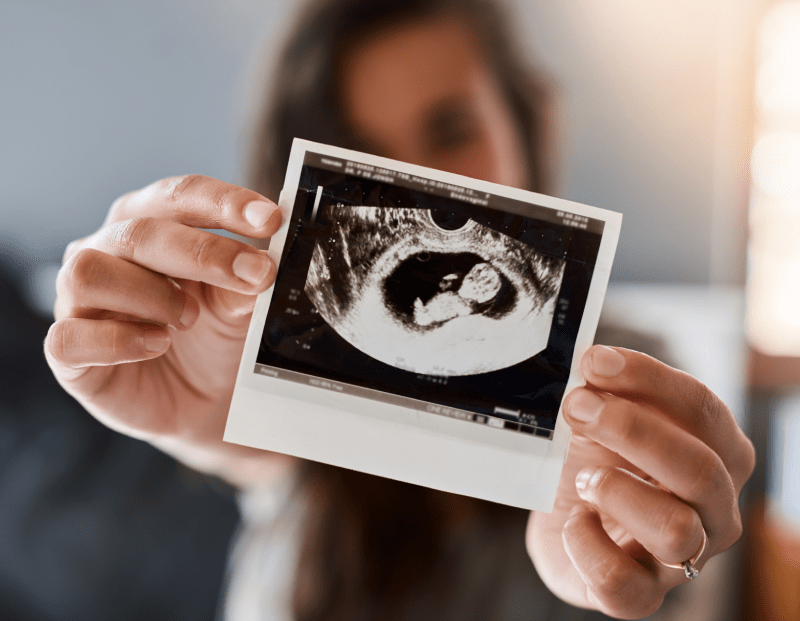
How Are PGT-A Or PGT-M Procedures Used For Gender Selection?
The PGT-A (Aneuploidy Screening) procedure is the most commonly used method for social gender selection because it checks whether the number of chromosomes in the embryos is normal and also analyzes the sex chromosomes (XX or XY). PGT-M (Single Gene Disease Diagnosis), on the other hand, allows for medical selection by looking at the relationship between the disease and gender while diagnosing a known disease in the family (e.g., gender-linked inherited diseases like hemophilia). The main goal in social selection is the determination of gender in addition to chromosome counting.
How Is Gender Determined Before Embryo Transfer?
Gender determination before embryo transfer is carried out by analyzing the cell sample (biopsy) taken from the blastocyst-stage embryo in a genetic laboratory. In the laboratory, the sex chromosomes (XX – girl, XY – boy) contained in the cells are examined. This analysis is usually done with fast-result techniques, and the results are awaited while the embryo is cryopreserved. When the results arrive, the healthy embryo confirmed to be of the desired sex is selected for transfer in a subsequent cycle.
What Is The Average Cost Of Overseas Gender Selection Treatment?
The average cost of overseas gender selection treatment is higher because it includes the PGT (gender determination) fee in addition to a standard IVF cycle. This cost generally varies between $7,000 and $12,000 depending on the country and the technology offered by the clinic (including basic IVF and PGT costs). It should be remembered that the total budget will increase when medication expenses, travel, and accommodation costs are added to this price. Costs in countries that legally offer this service are generally within this range compared to Turkey.
What Are The Success Rates In Gender Selection?
Success rates in gender selection are higher than standard IVF success rates, essentially because a genetically healthy embryo is transferred after the PGT procedure. Success again depends on the most critical factor, the prospective mother’s age, and the quality of the transferred embryo. In women under 35, live birth rates of up to 60-70% can be seen when a single genetically healthy embryo is transferred. The reason for achieving high success rates is the selection and transfer of only genetically healthy embryos.
What Are The Advantages Of Going Abroad For Gender Selection?
The biggest advantage of going abroad for gender selection is gaining access to an option beyond the legal restrictions in your home country. This is the only legal way for couples who want to perform gender selection for family balancing purposes. Other advantages include more affordable costs (compared to the USA), short waiting times, and access to advanced PGT technology. The possibility of managing all travel and accommodation logistics from a single center through agencies like Cure Holiday is also a significant convenience.
What Are The Mandatory Tests Required Before Starting Treatment?
Before starting gender selection treatment, it is mandatory to have all basic IVF tests performed. These tests include Ovarian Reserve Tests (AMH, FSH, E2), hysterosalpingogram or ultrasonographic uterine assessment for the prospective mother. A detailed sperm analysis is requested from the prospective father. Additionally, infectious disease screenings (HIV, Hepatitis, etc.) are required from both partners. The results of these preliminary tests are used by the overseas clinic to determine the protocol and evaluate suitability for treatment.
How Many Days Does The Treatment Process Last In Gender Selection?
A full IVF cycle including gender selection usually lasts between 15 and 20 days. This period covers the stages from the start of ovarian stimulation for the prospective mother to egg retrieval, embryo development, and PGT biopsy. Although the PGT results and transfer planning require additional time, the duration of stay abroad for the transfer itself can be kept shorter after the embryos are frozen. Couples usually have to spend the entire 15-20 day period in the city where the treatment center is located.
How Are Accommodation And Travel Managed During Treatment Abroad?
Managing accommodation and travel arrangements during treatment abroad can be stressful, especially in a foreign country. Therefore, medical tourism agencies like Cure Holiday alleviate this burden for patients. The agencies organize comfortable and hygienic accommodation (hotels or apartments) close to the clinic, and arrange airport transfers and local transportation to the clinic. These services allow patients to focus only on the medical process, making the treatment experience much more comfortable and manageable.
What Are The Additional Costs Of Medications Used In The Treatment?
The cost of hormone medications (gonadotropins) used in gender selection treatment is calculated in addition to the overseas treatment package. The additional cost of these medications varies from country to country, depending on the prospective mother’s ovarian reserve and the protocol applied. This cost, which is very high in the USA, can be more affordable in some popular overseas destinations. Medication expenses generally add an extra burden between $500 and $3,000 on top of the basic IVF fee. Clearly learning the medication costs from the clinic that will conduct the treatment is a critical part of budget planning.
What Is The New Treatment Cost In Case Of Recurrent Failure?
When a PGT IVF attempt for gender selection fails, the new treatment cost depends on whether genetically healthy frozen embryos of the desired sex remain from the previous cycle. If frozen, desired sex, and genetically healthy embryos are available, only the Frozen Embryo Transfer (FET) fee is paid, which is much lower than a full fresh cycle. If a new egg retrieval (fresh) cycle is required, the cost will revert to a full cycle fee, including the PGT fee.
What Is The Effect Of The Age Factor In Gender Selection Treatments?
In gender selection treatments, the prospective mother’s age is the most decisive factor influencing the success rate. As age advances, egg quality decreases, and the chance of obtaining a genetically normal (euploid) embryo drops. Since the PGT procedure searches for genetically healthy embryos, the number of healthy embryos to be screened with PGT also decreases in older patients. This situation reduces the chance of finding a healthy embryo of the desired sex. Therefore, older couples are advised to start treatment as soon as possible or consider egg donation options.
What Are The Ethical Debates Surrounding Gender Selection Treatment?
The ethical debates surrounding gender selection treatment revolve around the possibility of this practice disturbing the “natural balance,” leading to gender discrimination, and the use of medical resources for cosmetic purposes. Many ethics committees and countries advocate that genetic testing should only be used for medical necessity (disease risk). Social gender selection is prohibited in many countries due to these debates. It is important for couples to reflect deeply on the ethical responsibilities and potential societal effects of the practice before making this decision.
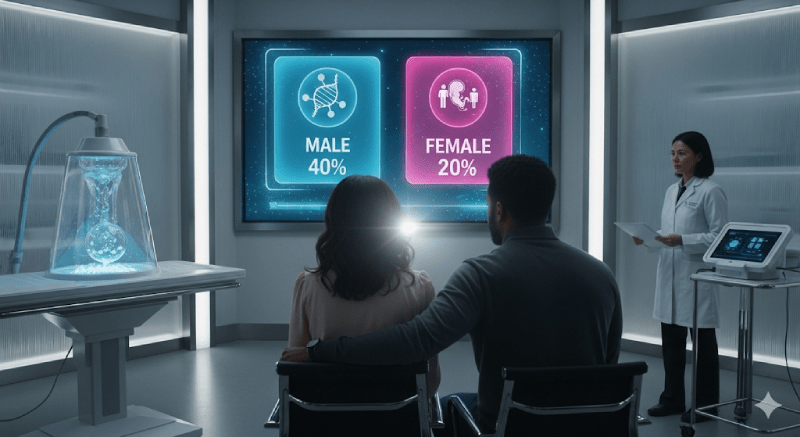
Where Are The Popular Centers That Allow Gender Selection?
Popular centers that legally permit gender selection and offer services to international patients are generally concentrated in Turkish Republic of Northern Cyprus (TRNC), Mexico, and US states with specific legal regulations. These centers primarily respond to family balancing requests and utilize high-technology laboratory facilities like PGT. These destinations are the most preferred regions among couples due to the affordable packages they offer (especially TRNC) and legal ease.
How Is The Language Barrier Overcome During Treatment?
The language barrier during overseas treatment is overcome with professional support provided by international patient-accepting clinics and medical tourism agencies like Cure Holiday. Clinics generally employ multilingual international patient coordinators. These coordinators manage patients’ appointments, medical translations, and all communication processes in their native language or English. The presence of professional medical interpreters during critical procedures (examinations and transfer) prevents disagreements and errors.
Does The PGT Procedure Harm Embryos?
Although the PGT procedure requires cell sampling (biopsy) from the embryo, it carries a minimal risk of harm to the embryos thanks to modern techniques and experienced embryologists. The biopsy is taken from the outer cell layer of the embryo (trophectoderm), which will not form the baby. After this procedure, the embryos are frozen, and genetically healthy embryos confirmed to be healthy show a high rate of viability when thawed and transferred. When applied correctly, PGT is generally accepted as having no permanent negative effect on the embryo’s implantation ability.
What Does The Total Cost Of Gender Selection Treatment Cover?
The total cost of gender selection treatment covers PGT (genetic examination) and embryo freezing fees in addition to standard IVF services. In detail, it includes: Basic IVF package (egg retrieval, laboratory), PGT biopsy and analysis fee, the cost of hormone medications used, and the embryo storage fee. If treatment is received abroad, additional logistical costs such as travel, accommodation, transfers, and interpretation services must also be included in the total budget.
Are There Legal Risks For Couples Undergoing Gender Selection?
There are no legal risks for couples going abroad for gender selection within the framework of the laws of the country where they receive treatment. However, if the laws of their home country prohibit this practice (as in Turkey), this situation may lead to ethical or national legal discussions. The most significant legal risk is attempting to obtain this service illegally in a country where the practice is not legal or trying to transfer embryos illegally to a country with legal restrictions, which should be absolutely avoided.
Which Age Group Of Patients Is More Successful For Gender Selection?
The highest success rates for gender selection are seen in prospective mothers under 35 years old. Egg quality is higher in this age group, which maximizes the chance of obtaining a genetically normal (euploid) and thus healthy embryo of the desired sex after PGT. As age advances (especially over 40), the process of finding a healthy embryo of the desired sex becomes difficult and costly due to the decrease in the total number of embryos and the rate of genetically normal embryos.
What Additional Methods Are Used To Increase Success In Gender Selection?
Advanced laboratory techniques are used in addition to the standard IVF protocol to increase success in gender selection. These include Time-Lapse (Embryoscope) incubators that allow uninterrupted monitoring of embryo development to select the highest quality embryo, and genetically examining the embryos before transfer (PGT). Additionally, extra tests like ERA (Endometrial Receptivity Analysis) to determine whether the uterine lining is ready to accept the embryo may also be applied in some cases to support success.
How Is PGT Priced In Overseas Clinics?
PGT pricing in overseas clinics generally consists of two main components: The biopsy fee taken per embryo and the analysis fee performed by the genetic laboratory. Some clinics may offer a fixed PGT package covering a certain number of embryos (e.g., 8 or 10 embryos), while others charge a separate fee for each embryo. This pricing can vary significantly depending on the quality and speed of the genetic laboratory the clinic contracts with. A detailed price list should be requested for financial transparency.
What Is The Quality Of PGT Technology Used In Gender Selection?
The quality of the PGT technology used in gender selection is extremely high and reliable. Modern genetic laboratories perform chromosome analysis using advanced methods like next-generation sequencing (NGS). These analyses determine the embryo’s sex with an accuracy rate of over 99%. Quality also depends on the experience of the embryologists performing the biopsy and the laboratory’s compliance with international quality control standards (ISO, CAP).
What Documents Should Be Prepared Before Going For Treatment?
The basic documents that need to be prepared before going for treatment are: Copies of the couple’s passport/ID, marriage certificate (a legal requirement for some countries), English translations of all previous medical test results, and a health report summarizing the treatment history. Additionally, travel insurance and pre-filled informed consent forms required by the clinic should also be completed. Ensuring all these documents are complete and up-to-date prevents time loss during the treatment process.
Is There A Waiting Period In Gender Selection Treatments?
In gender selection treatments, there are generally no long waiting periods unless donation is required (egg/sperm donation). International patient-accepting clinics can quickly arrange appointments to match the couples’ travel plans. However, the time it takes for PGT results to arrive (usually 10-14 days) can be considered a waiting period; during this time, embryos are stored frozen. Completing your preliminary tests in your home country minimizes the waiting time.
What Are The Side Effects Of Gender Selection Treatment?
The side effects of gender selection treatment are basically the same as the side effects of standard IVF treatment and arise from the use of hormone medications. These include mild abdominal bloating, breast tenderness, headaches, and emotional fluctuations. There are no additional side effects specific to the PGT procedure or gender selection. The rare risk of OHSS (Ovarian Hyperstimulation Syndrome) is managed with personalized protocols, as in all IVF cycles, to minimize the risk.
Can Gender Selection Be Done With Frozen Embryos?
No, gender selection cannot be done retroactively with frozen embryos. The PGT procedure requires a biopsy at the blastocyst stage and genetic examination immediately before the embryo is frozen. If a couple has previously frozen embryos without PGT, these embryos would need to be thawed and biopsied to determine their sex with PGT. However, the process of thawing and re-freezing embryos is generally not preferred as it can risk the embryos’ viability.
What Is The Importance Of Psychological Support During The Treatment Process?
The IVF treatment process, including gender selection, can be emotionally intense and stressful. High expectations, financial pressure, and the feeling of foreignness from being abroad increase stress. Receiving psychological support helps couples cope with this intense emotional burden in a healthier way, maintain their motivation, and speed up their recovery process in case of possible failure. This support, which can indirectly increase treatment success, should be considered an integral part of the process.
Are There Purposes Of Gender Selection Other Than Family Balancing?
The only purpose of gender selection other than family balancing (social purpose) is to prevent serious gender-linked inherited genetic diseases (medical purpose). The PGT-M procedure aims to select the embryo that does not carry the disease or is not at risk (regardless of gender) if the genetic disease carried by the couple only risks manifesting in a specific gender. There are no other medical purposes allowing this practice other than social purposes.
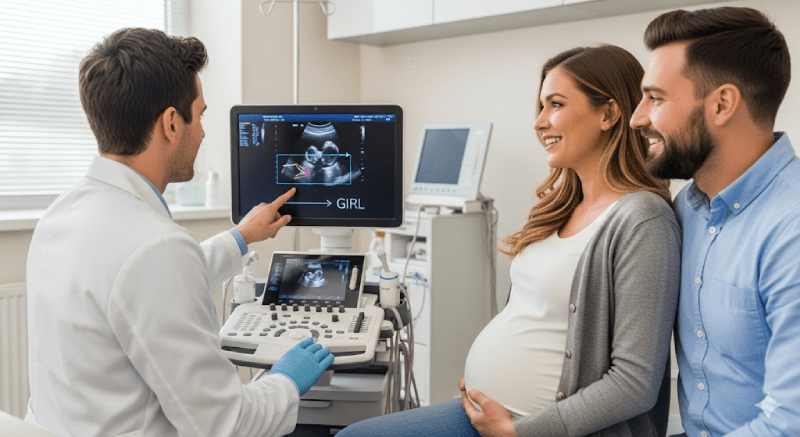
How To Choose A Reliable Clinic For Gender Selection Abroad?
When choosing a reliable clinic for gender selection abroad, factors other than just price should be prioritized: The clinic’s international accreditations (JCI, ISO), the quality of PGT technology, and the experience of the laboratory team. Furthermore, the transparency of the clinic’s gender-based success rates and the quality of language support and logistical organization offered to foreign patients are also critical. Working with intermediary institutions like Cure Holiday that carefully evaluate these criteria simplifies the process.
How Does Cure Holiday Provide Support In Gender Selection Treatments?
Cure Holiday provides comprehensive A-to-Z support to couples in gender selection treatments. This support includes identifying reliable overseas clinics that legally offer gender selection services, have high success rates, and meet international standards. Furthermore, it manages all logistical and administrative processes such as tailoring treatment packages to fit the budget, travel planning, accommodation, airport transfers, and providing professional interpretation services throughout the treatment. With Cure Holiday, couples can focus solely on the treatment by getting rid of all organizational burden.
